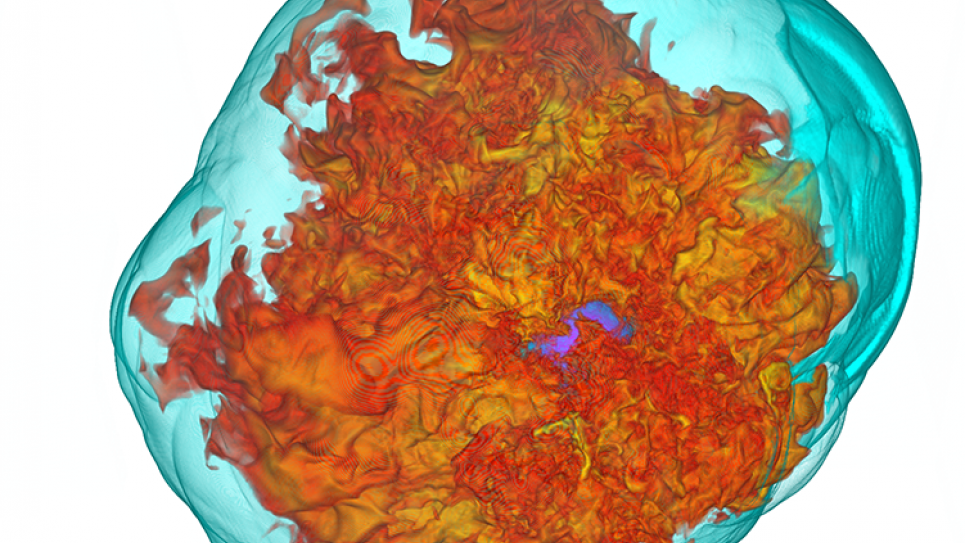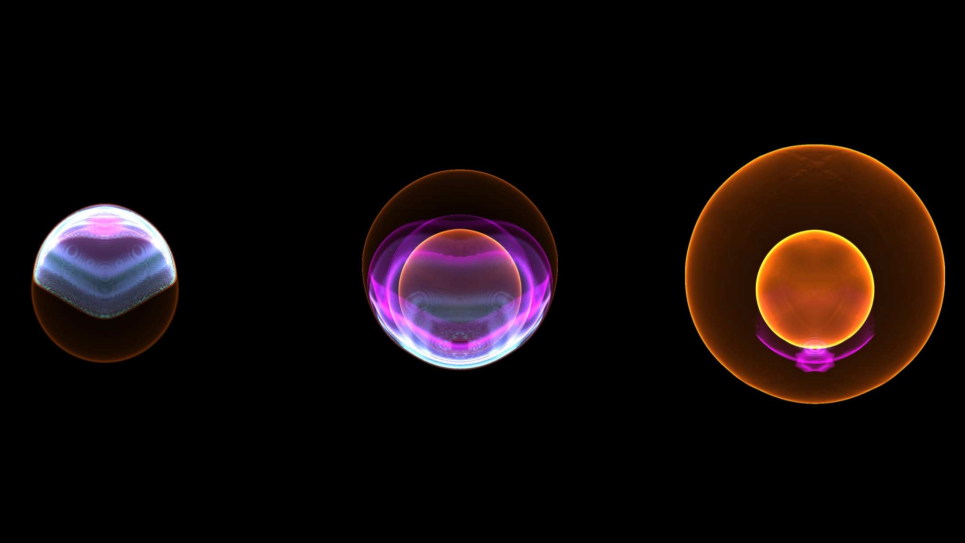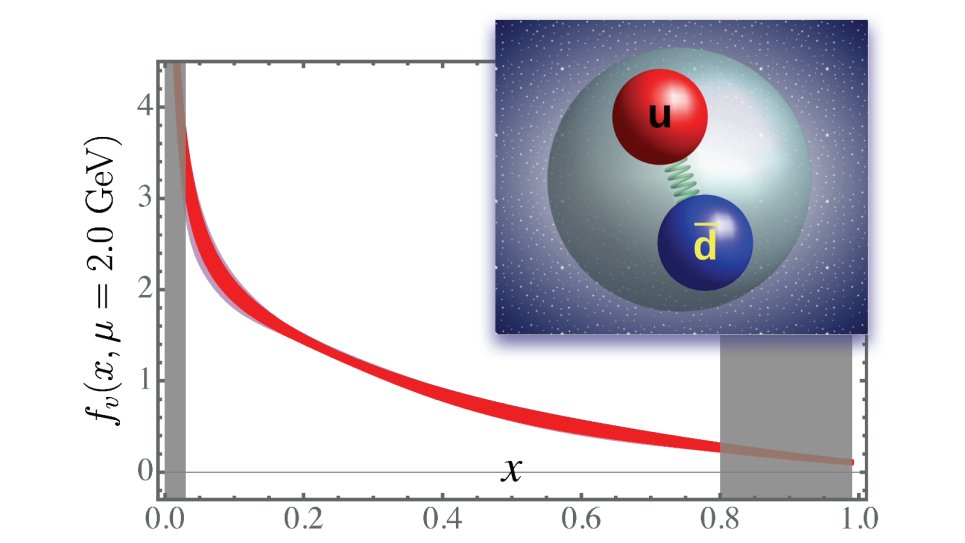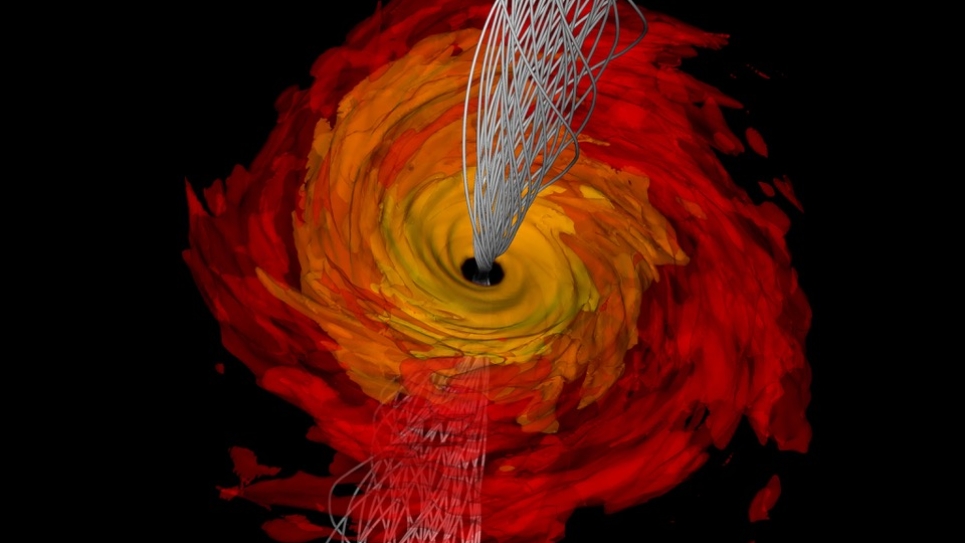
Petascale Simulation of Magnetorotational Core-Collapse Supernovae
Despite the importance of core-collapse supernovae (CCSNe) to our understanding of many aspects of the universe, the mechanism that reverses stellar core collapse and drives supernova explosions is not fully understood. The goal of this project is to carry out the most comprehensive study yet accomplished on the influence of magnetic fields and rotation in core-collapse supernovae (CCSNe). Using the multi-physics FLASH code on Mira, researchers will employ advanced 3D magnetohydrodynamics (MHD) simulations of rotating, magnetic stellar core collapse in an effort to uncover a robust explosion mechanism that matches observations.
Researchers are running two fine-grid full-star simulations, one non-rotating with zero initial magnetic field and one with moderate rotation and weak initial field strength. Given the recent realization of the important role plain hydrodynamic turbulence plays in the CCSNe mechanism, it was determined that a non-magnetic, non-rotating control simulation was crucial. The control proves valuable, both as a comparison to magnetorotational simulations and as a test of the resolution required to accurately model hydrodynamic turbulence in the CCSN context. Early indications suggest that the growth rate of the magnetic field strength in the magnetorotational simulation is faster than for the lower resolution case. Detailed analyses of both simulations are currently under way.
In preparation for 3D full-neutrino transport simulations, several 2D CCSNe simulations were conducted, which yielded significant scientific results. Specifically, it was found that, in purely Newtonian cases, no progenitor successfully explodes, while including an approximate treatment of relativistic gravity results in successful explosions for some progenitors.


